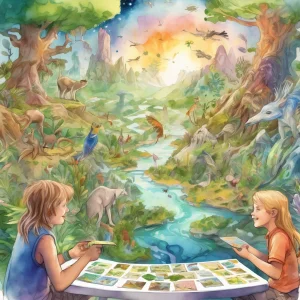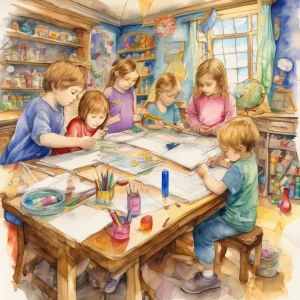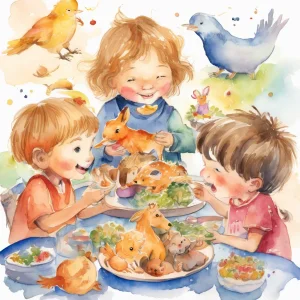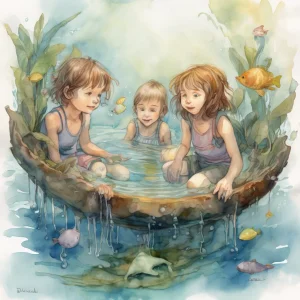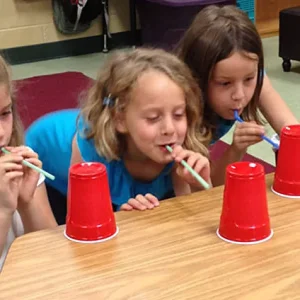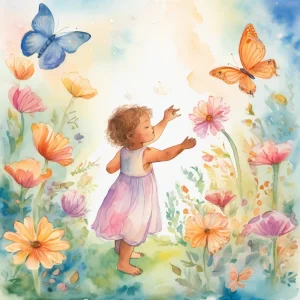Activity
Similar Activities
Ecosystem Adventure Board Game - Nature's Quest
Children’s Age: 7–9 years
Activity Duration: 10 – 25 minutes
An interactive board game where children explore and learn about ecosystems through challenges and tasks.
Activity Duration: 10 – 25 minutes
Enchanted Measurement Adventures: Measuring Real-World Objects Scavenger Hunt
Children’s Age: 5–10 years
Activity Duration: 10 – 20 minutes
An educational activity engaging children in measuring real-world objects through a fun scavenger hunt.
Activity Duration: 10 – 20 minutes
Animal Feast Adventure: A Whimsical Feeding Frenzy
Children’s Age: 5–8 years
Activity Duration: 10 – 25 minutes
An interactive activity where children feed toy animals with pretend food, promoting communication skills and adaptive development.
Activity Duration: 10 – 25 minutes
Nature's Objects: Exploring Buoyancy Adventure
Children’s Age: 6–7 years
Activity Duration: 10 minutes
An engaging hands-on activity for children aged 6-7 to explore buoyancy with natural objects.
Activity Duration: 10 minutes
Shadow Hunt and Solar Exploration
Children’s Age: 5–6 years
Activity Duration: 10 – 30 minutes
An activity combining Physics, Space, and Ecological Awareness for children aged 5-6 to explore shadows and solar energy.
Activity Duration: 10 – 30 minutes
Musical Kindness Quilt
Children’s Age: 8–10 years
Activity Duration: 10 – 20 minutes
The "Musical Kindness Quilt" activity engages 9-year-old children in learning about famous musicians while enhancing communication skills and cognitive development. Children choo…
Activity Duration: 10 – 20 minutes
Enchanted Forest: The Nature Scavenger Hunt
Children’s Age: 2–6 years
Activity Duration: 15 minutes
Let's go on a Nature Scavenger Hunt to explore and enjoy nature! You'll need a basket, a list of items to find, paper, markers, and maybe some magnifying glasses. Choose a safe out…
Activity Duration: 15 minutes
Whimsical Cup Blow Race for Kids
Children’s Age: 4–6 years
Activity Duration: 5 – 10 minutes
The Cup Race Challenge activity is designed to boost teamwork, fine motor skills, and problem-solving in children. You'll need plastic cups, straws, a table, and masking tape to cr…
Activity Duration: 5 – 10 minutes
Whispers of Imagination: A Tale Unfolds
Children’s Age: 2–2.5 years
Activity Duration: 15 minutes
Join "Story Collage Time" for children aged 24 to 30 months, a creative activity fostering language development, play skills, and imagination. Gather child-friendly scissors, glue …
Activity Duration: 15 minutes
Enchanted Nature Walk: The Sensory Adventure
Children’s Age: 1–1.5 years
Activity Duration: 10 minutes
Engage your 12 to 18-month-old in the Sensory Nature Walk to boost their language, sensory, and social skills through outdoor exploration. Prepare for the adventure by dressing you…
Activity Duration: 10 minutes
Enchanted Digital Nature Scavenger Hunt: A Journey Through Technology and Nature
Children’s Age: 12–16 years
Activity Duration: 30 – 40 minutes
The Digital Nature Scavenger Hunt is a engaging activity tailored for children aged 12 to 16, promoting language development, communication skills, empathy, and computer literacy. …
Activity Duration: 30 – 40 minutes
Enchanted Sensory Garden Exploration for Infants
Children’s Age: 0 – 3 months
Activity Duration: 10 minutes
Explore the Sensory Garden with your little one aged 0 to 3 months for a delightful outdoor sensory experience. Enhance communication skills and adaptive development as your infant…
Activity Duration: 10 minutes





